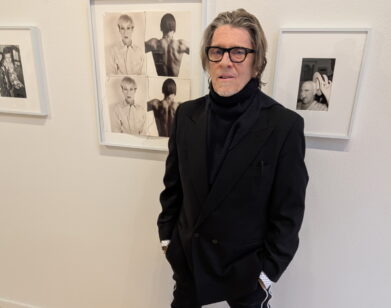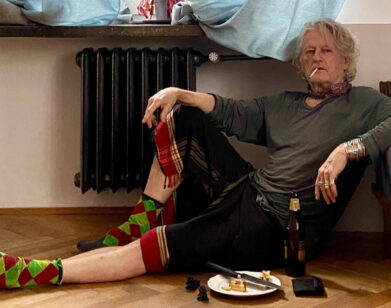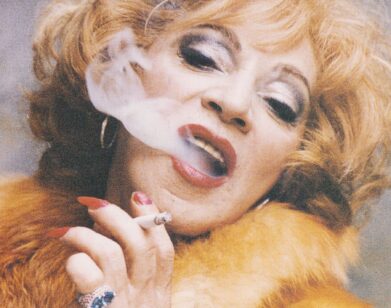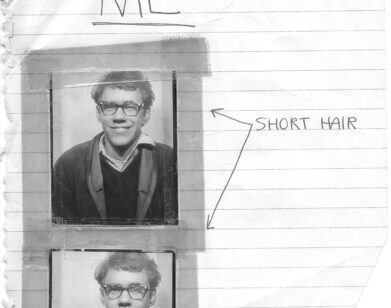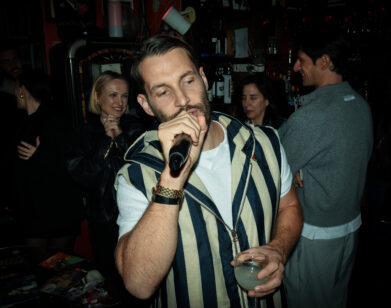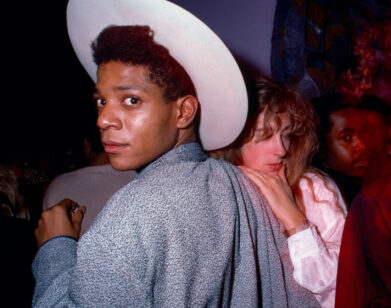COLLECTOR
Former Interview Editor Joan Agajanian Quinn Shows Us Her Treasured Art Collection

On a trip to L.A. last month, I paid a visit to the luscious Beverly Hills home of storied art world muse and former Interview west coast editor Joan Agajanian Quinn. The 88-year old has lived in her California home for over 50 years, filling it with relics culled over the course of a riveting life spent in the orbit of artists-turned-friends. The walls, floors and hallways are a colorful maze of artworks and stacks of printed matter that’s easy to get lost in. Included are works gifted by some art world heavyweights, including Ed Ruscha, Lynda Benglis, and Vija Celmins, nestled in with pieces from local and mostly unheralded California painters that have caught Quinn’s eye over the years. When I arrived for our visit, she was receiving a delivery from the budding painter Sol Summers, who had just painted Quinn’s portrait over the summer (as Richard Bernstein and Jean-Michel Basquiat once did, too). Before giving us a tour of her most cherished pieces, the muse and collector talked to me about her warmest memories of Andy Warhol, working for Bob Colacello, and her hand in shaping the L.A. art scene over the years.
———
JOAN AGAJANIAN QUINN: This is really weird, sitting here with you. I don’t like being on this side. I like to be on your side, asking the questions. It’s pretty daunting thinking that 50 years ago I was interviewing people like you’re doing, but we weren’t online. I used to type everything out and send it back.
EMILY SANDSTROM: Really?!
QUINN: Yeah. In an envelope and mail it back to them.
SANDSTROM: Would they call you to make edits?
QUINN: Yeah. Sometimes I would mail back the little cassette that I was using and then they would redact it and mail it to me. Then I’d have to edit it and mail it back. It was an ordeal, but I loved it.
SANDSTROM: Wow.
QUINN: I loved working at Interview so much. It was really a highlight of my life. Even going back to the factory and being upstairs with Andy and having lunch with them in that big room with all the advertisers, like the Marciano brothers. It was really like a New York happening, and we didn’t have that in L.A.
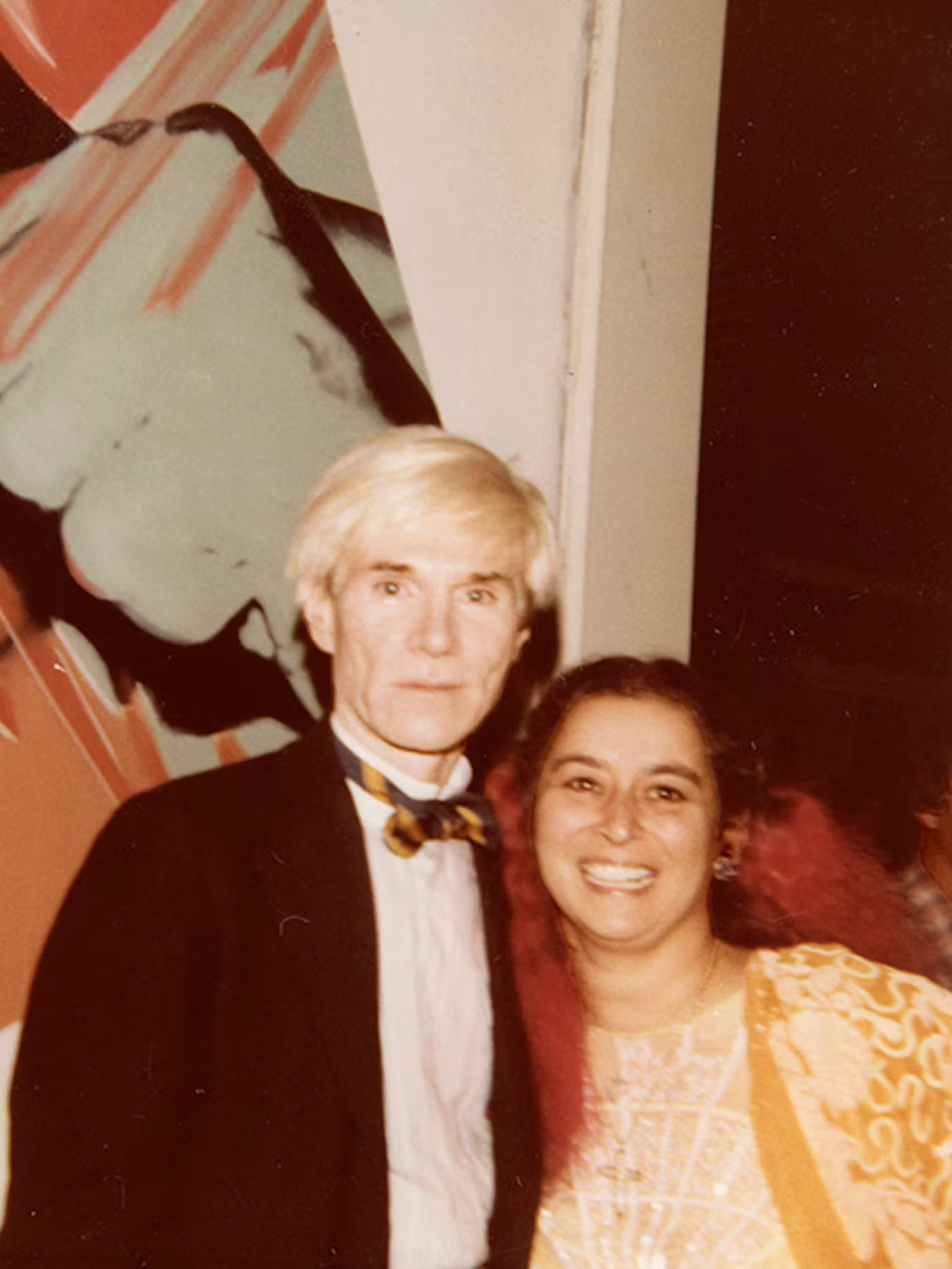
Andy Warhol and Joan Agajanian Quinn. Photo courtesy of Joan Agajanian Quinn.
SANDSTROM: How long have you lived in this house?
QUINN: We moved in when my babies were born, 55 years ago. It was built for Oliver Hardy. That was really interesting to Andy; he loved that a movie star lived here. Every time he was here he’d say, “Joan, you have so many things against the wall, when are you going to start putting them on the ceiling?!” But he was the same way in his townhouse. There was art going all the way up the stairwell. He would probably love my house now because it’s got bags and boxes and books and everything piled on top of each other.
SANDSTROM: Do you ever rotate these works?
QUINN: I don’t. What would happen is, the artist would come in and find a wall they wanted to put their work on, and then it just stays there.
SANDSTROM: Oh, you let them pick?
QUINN: Exactly. But now that we’re loaning to museums, it’s a little different. We have to move things around, and we have hooks that don’t have anything on them. We have a Vija Celmins that’s on loan to Hauser & Wirth right now.
SANDSTROM: Tell me about the first time that met you Andy.
QUINN: So, I was in New York a lot because my husband would go on business. We would always go to art parties or openings, and we met at an art exhibit, Andy and I. The next day we were at a jewelry counter, because we were collecting Cartier watches at the time, and ’40’s jewelry. I could see Andy coming in. I said to my husband, “You keep the woman busy, and I’ll go out and say hello.” Because I knew the minute he came in, he was going to want what we were buying. Then I used to go back to New York and I’d call him up, and we’d walk up and down Madison Avenue with copies of Interview Magazine and he would give them out to people along the way. That’s how we were trying to build up our readership.
SANDSTROM: Wait, that’s really funny. How did you formally start working there?
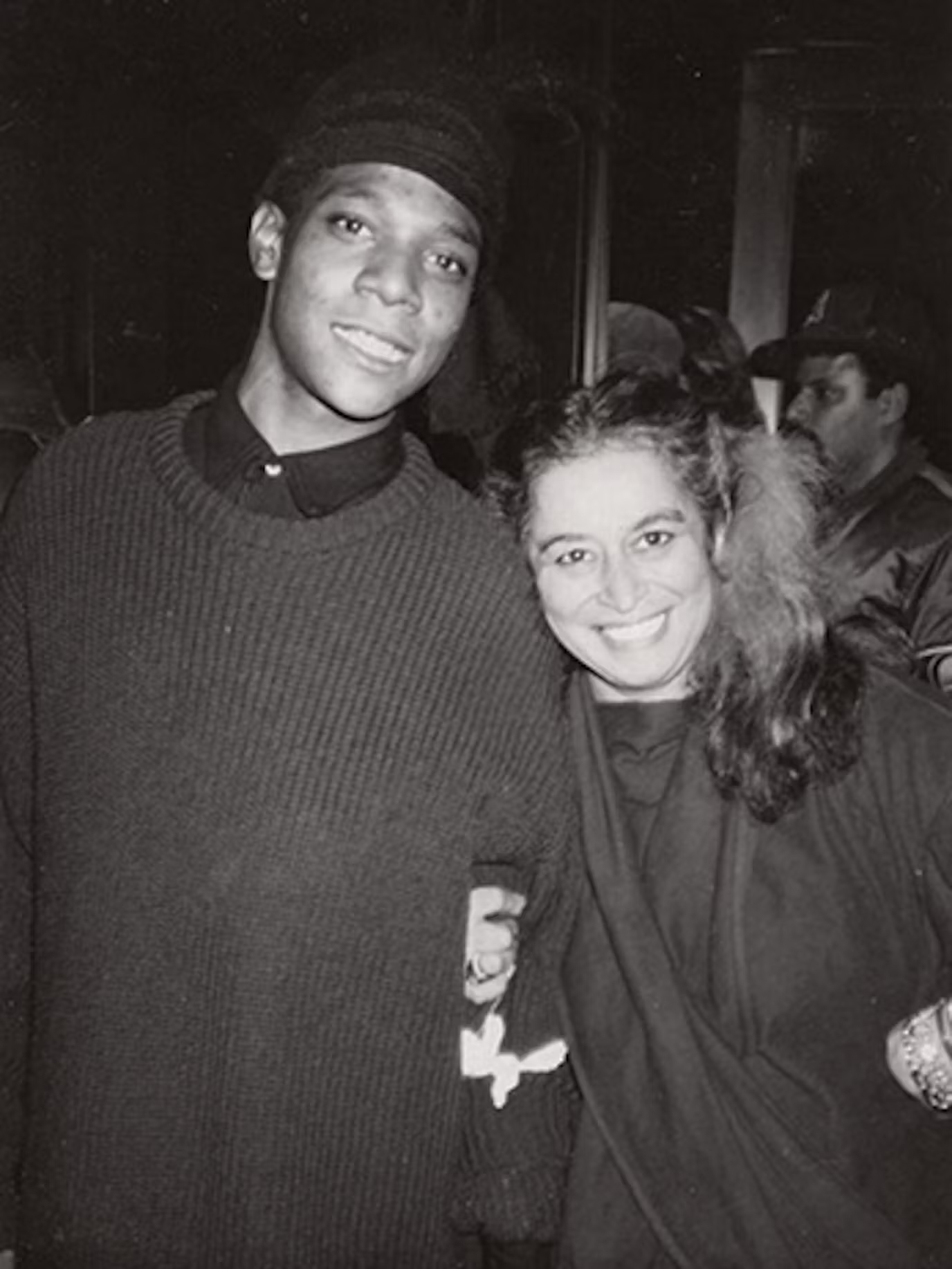
Jean-Michel Basquiat and Joan Agajanian Quinn. Photo courtesy of Joan Agajanian Quinn.
QUINN: There was a man here in L.A. named Frederick Nicholas who commissioned Mick Jagger works, and he was showing them at his house. Of course, Andy was there, and he pulled me over to one side and we were sitting on the fireplace ledge, and he said, “Where are all the jewelry places? Will you take me tomorrow?” And I said, “There’s a couple of places on Rodeo. We’ll go.” And then he said, out of nowhere, “Do you want to be my West coast editor?” And I said, “But Peter Lester’s your editor.” But he told me that Peter was leaving and he needed someone. So that’s how it went.
SANDSTROM: What do you think about the evolution of the magazine?
QUINN: I’ve loved it from the very beginning. I have some of those early newsprints that were folded in half in my apartment in New York, and all of the covers that Richard Bernstein did. Those are my favorite.
SANDSTROM: He was fantastic.
QUINN: I loved so many of those issues when Ingrid [Sischy] came in. I was gone by that time, because when Andy passed away I didn’t feel I could stay. It was really tough on me. But Bob Colacello was my editor for a long time, whom I adore.
SANDSTROM: Do you guys stay in touch?
QUINN: Yes, we’re in touch. He’s really great. And then we had Gael [Love], whom I didn’t really… Who was really difficult, let’s say that. I had done an interview with Patricia Vaill, who was the daughter of Seaman Schepps, who was a jeweler that Andy and I both collected. I asked if [Robert] Mapplethorpe could do the photographs and afterwards he said, “You can just take all these prints that I’ve made.” And I said, “Oh, that’s so nice of you. I’d love to have them.” And Gael said, “No, you can’t have them. You can only have one. I’m sending the rest back.”
SANDSTROM: Ouch. Well, I was wondering what qualities you have that you felt made you a good journalist? It seems as though you had a very on-the-ground and insightful presence.
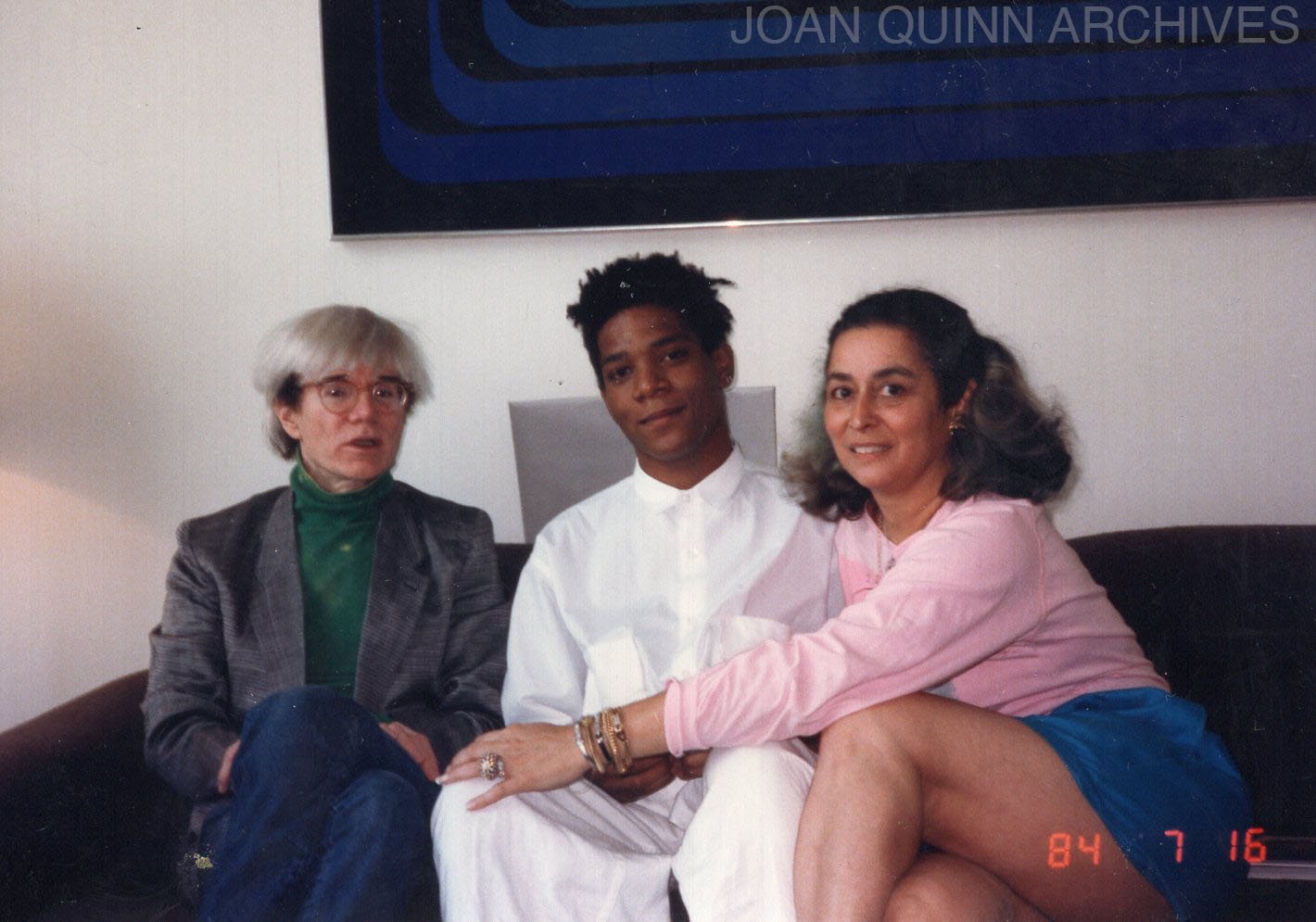
Photo courtesy of Joan Agajanian Quinn.
QUINN: I’m very observant. When working for The Herald Examiner, I used to lay the groundwork because I learned it at Interview. I’d make note of what’s around us, what the person was wearing, how they’re looking, what we were doing. It was a very important time in my life.
SANDSTROM: This is such a cool, full-circle moment. Also, I wanted to mention that there’s a lot of profiles on you that describe the role that you played in developing the L.A. art scene–
QUINN: I haven’t really developed anything. We just collected art from people who were close to us because we felt like we wanted them in our house. But when I first started, nobody would buy art in L.A.. They would have to go to New York, so for us to be buying Southern California artists was unique. We were never really gallery people. We were more friends with the artists and their friends, and my husband was always defending the artists against the galleries because the galleries would always be screwing them over. Nothing’s changed.
SANDSTROM: How often do you commission portraits?
QUINN: None of them have been commissioned. They’ve all been done organically. It’s usually just that one artist sees that another artist is in, and they do the painting. This was different with Sol, because a friend of mine said that he should do my portrait, which was really very interesting because I haven’t really sat for many of them. Many of them are just people who know me and they just paint me using whatever medium they have.
SANDSTROM: How long did you sit for?
QUINN: I sat three times in his studio in Downtown L.A. He’s very fast. He did sketches first, then he did a layout on the canvas, which was huge.
SANDSTROM: What do you keep in mind when you’re collecting?
QUINN: Well, the collection is very old. We started collecting when we were first married. We only bought things that were from our friends, who happened to be this group of artists in Venice. It was Ed Moses, [Laddie John] Dill, [Charles] Arnoldi, Tony Berlant, Ken Price, Peter Alexander, Ed Ruscha. That whole group, so it was like a boys club. And I felt like I was one of the boys, which was great. I would interview them for Interview. The first interview I ever did I think was with Arnoldi, at the West Beach Café.
_____
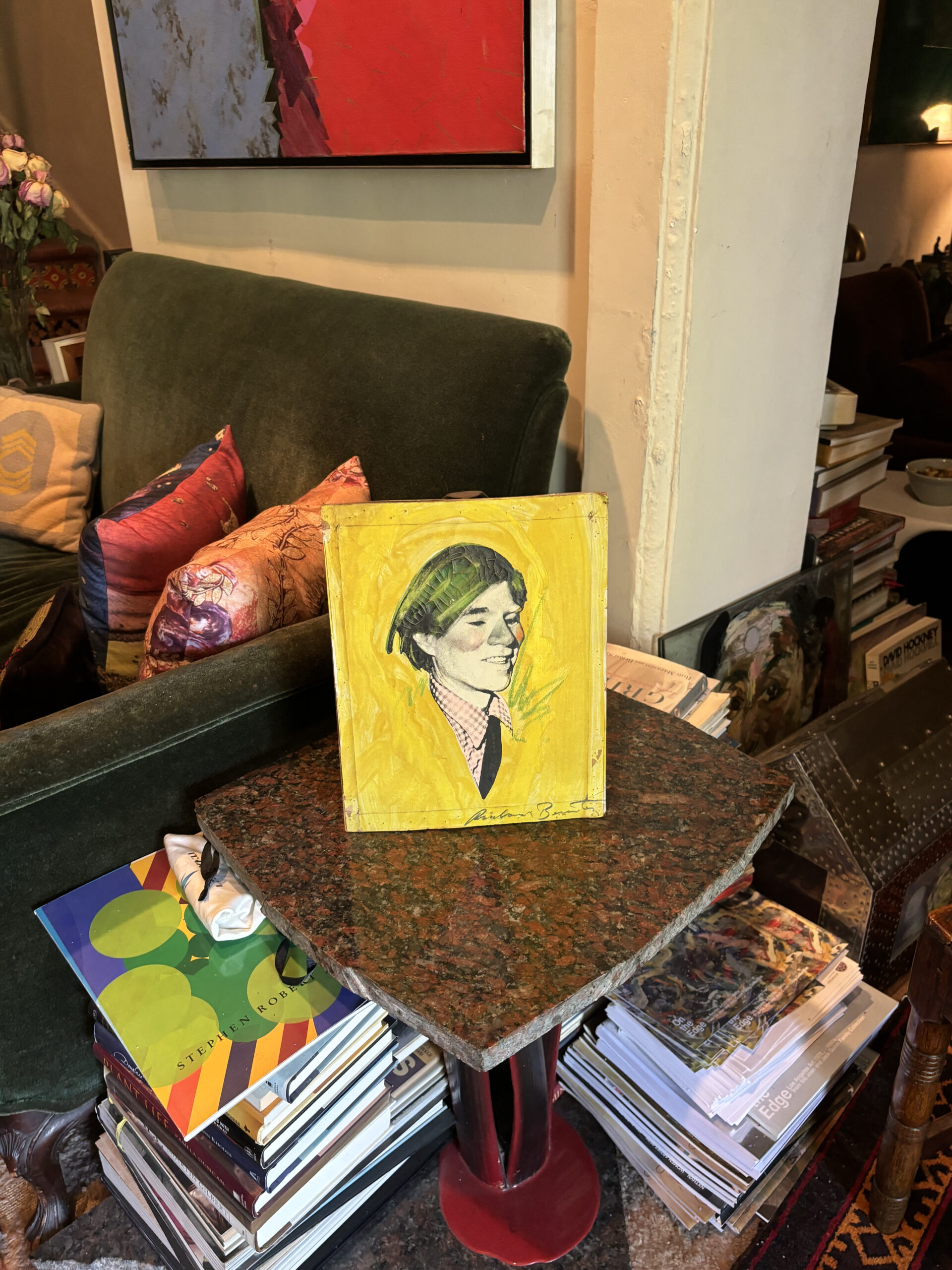
“Richard [Bernstein] gave me this painting of Andy because he knew how close we were. It’s just on a piece of cardboard. I don’t know the year it was painted. We don’t know anything like that. Our life just passes by.”
________
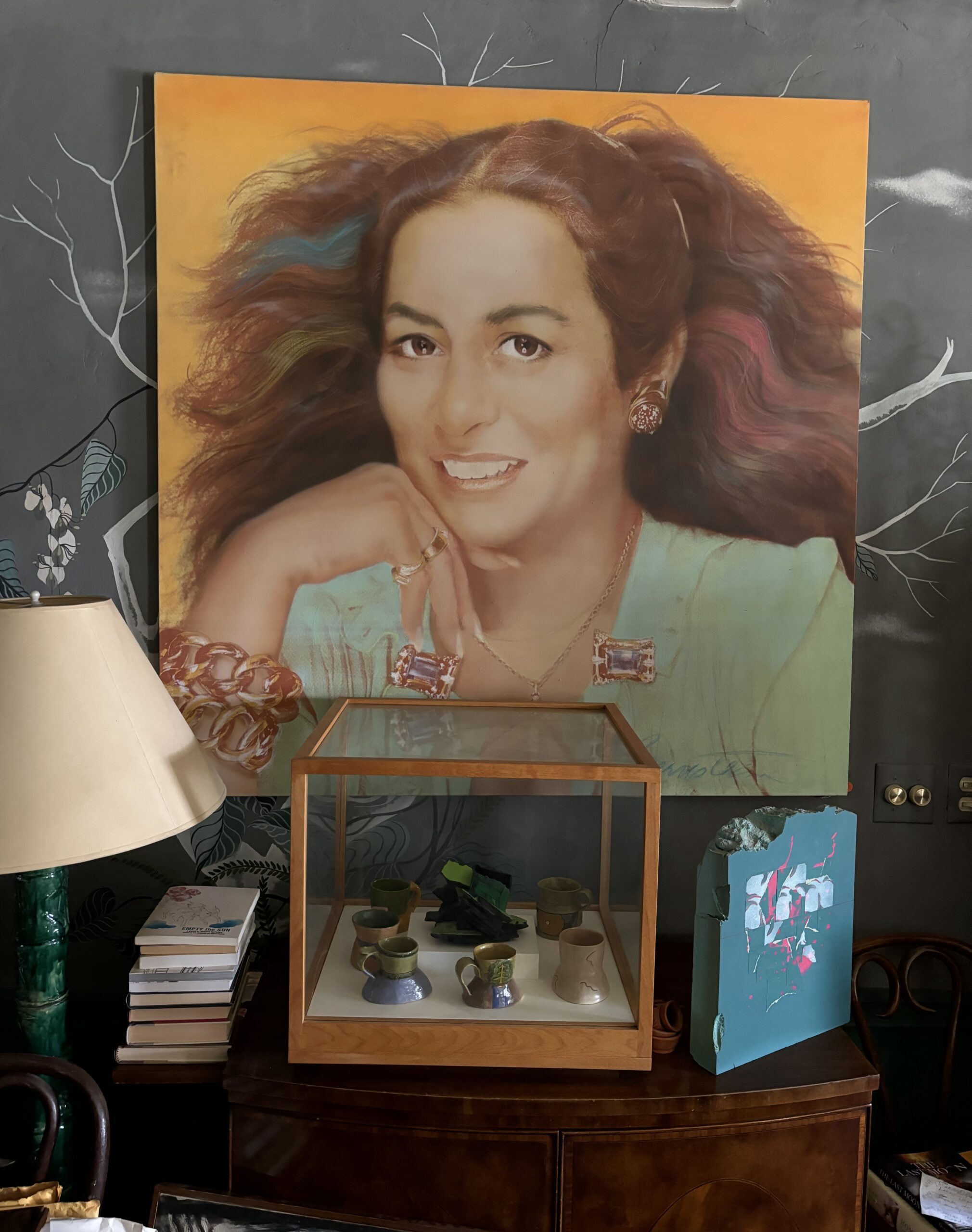
“Richard wanted to do a portrait, so he had his favorite photographer take the picture and then he painted from it. It’s beautiful, and I love his signature. I really love that piece so much.”
________

“It’s a very early Billy Al Bengston. You can see the cross in it, because he was using parts of motorcycles before. It’s painted this striking green color, and he used to be very good friends with Ken Price, who was a ceramist. Ken made an egg which is the same color as this, and it always looked like they were dipping from the same pot, because they were so similar in color.”
_______

“It’s an early Billy Al Bengston painting on top, and below is an Ed Ruscha bowling ball. I think he only did two bowling balls. There’s no words on it, so it’s difficult to know that it’s Ruscha. We were really close to Ed. He was around all the time. He was the handsome Romeo and still is. He also did a ’78 record suspended like that, with no words. And then there’s a Robert Graham figure, and the cutout is Stuart Rapeport. Underneath is a table of Bob Graham sculptures.”
_______

“This is an Ed Moses paper piece. He brought it over, put it there, and it stayed.”
_______
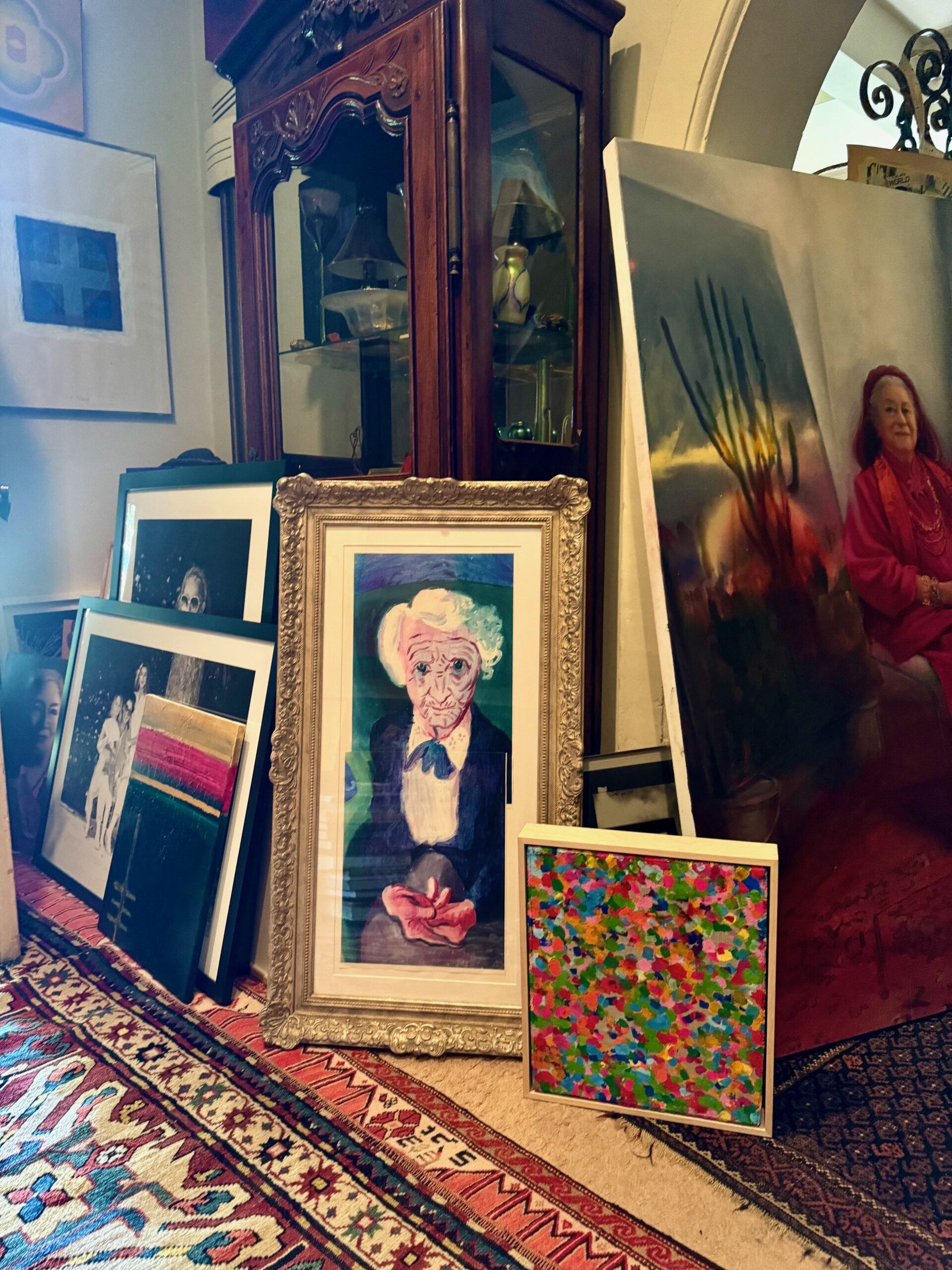
“That’s a print of [David] Hockney’s mother that he made at his studio on Mulholland and gave to me. I really cherished it because he was very close to his mother. When she passed away, I was so grateful that I had this wonderful print of her And the little one below is a very, very young artist named Nicholas Kontaxis. He’s neurodivergent and he paints in the Palm Desert.”
______
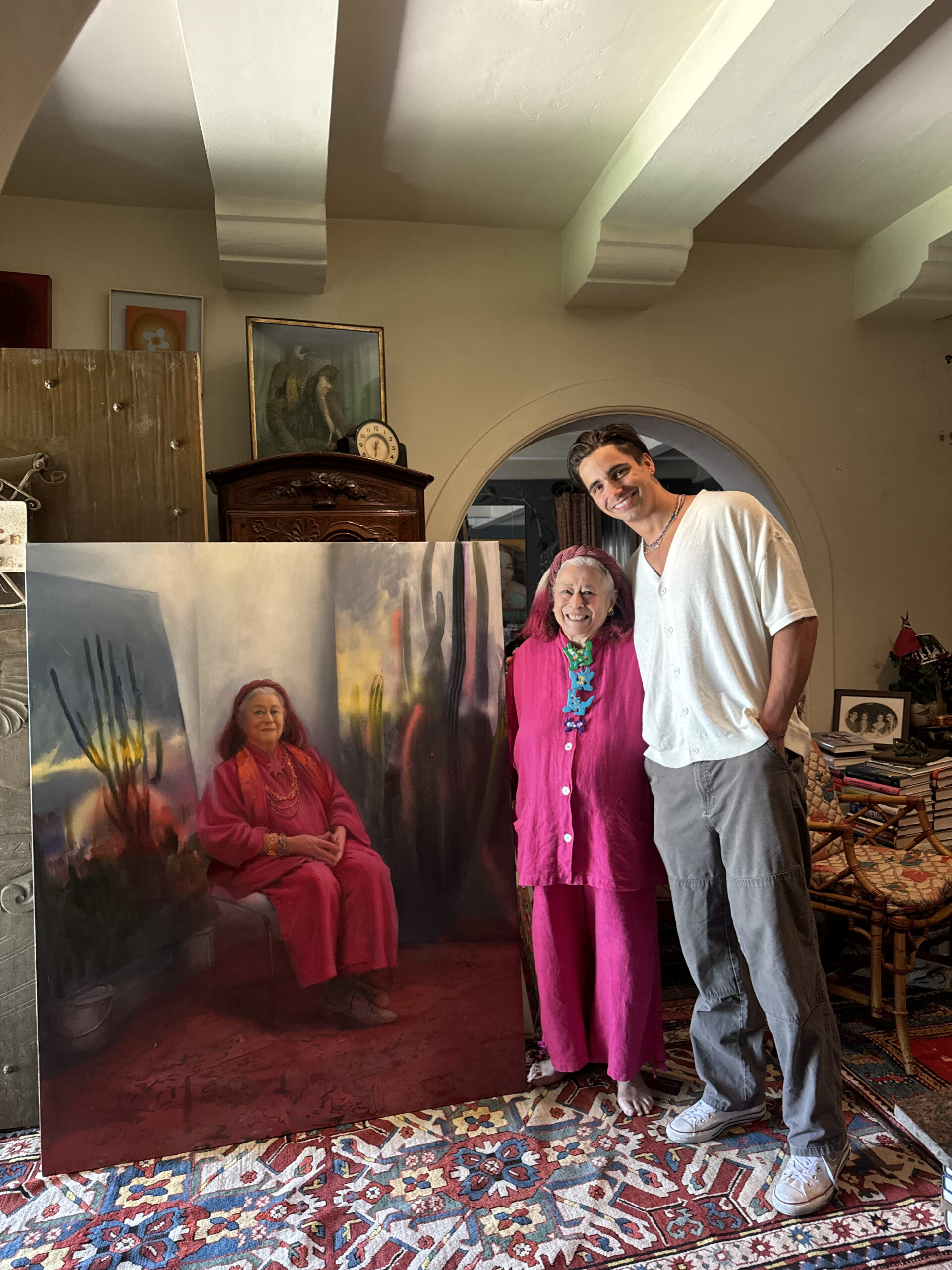
“Sol, do you know where you want your painting to live? Make a spot for it.”
______

“This portrait is by Rupert Jasen Smith. Andy had done the original Polaroid and kept saying, I’m going to do your portrait next. It’s on my desk. And when he passed away, Jason said, I know Andy was going to do your portrait, so I’ll do one. So I went to the studio and sat for Jason and he made the painting. He made a blue one and a pink one. And then he said, do you want me to sign Andy’s name on it? And I said, No, you’re the one who did this. You sign your name on it. And he said, But I always sign Andy’s name. Anyway, I have two of them, the blue and the pink.
______
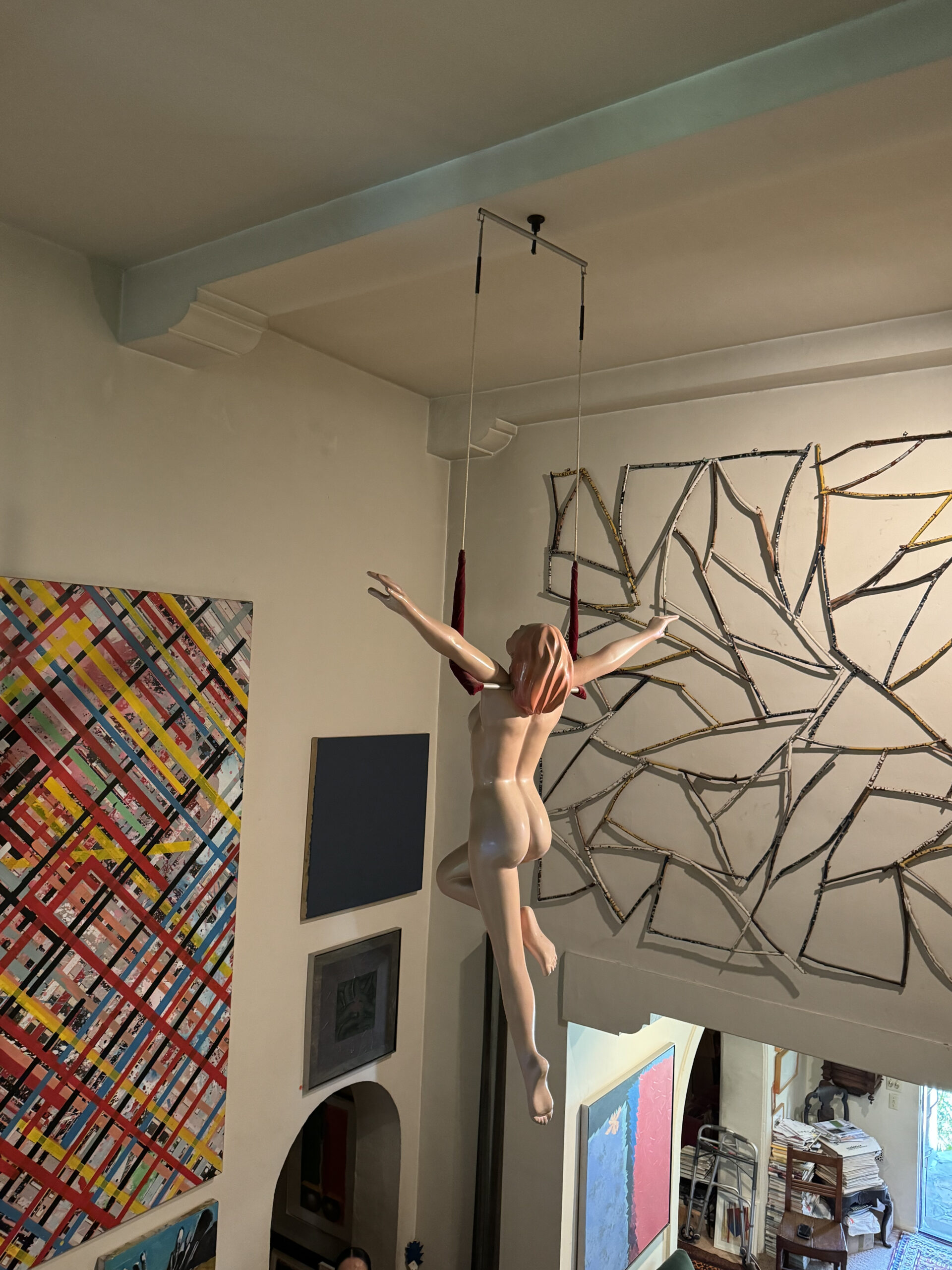
“This is a friend of ours from London, Antony Donaldson. He did three or four of these sculptures. She’s laying on the trapeze in one, and then she’s hanging in one, and one-handed on another one. He was a very good friend of Bob Graham’s and we became close to him. He also did the logos for Emmanuelle Khanh and worked with her in Paris a lot. That’s his painting up above, so you can see the similarity in what he was doing.”
______
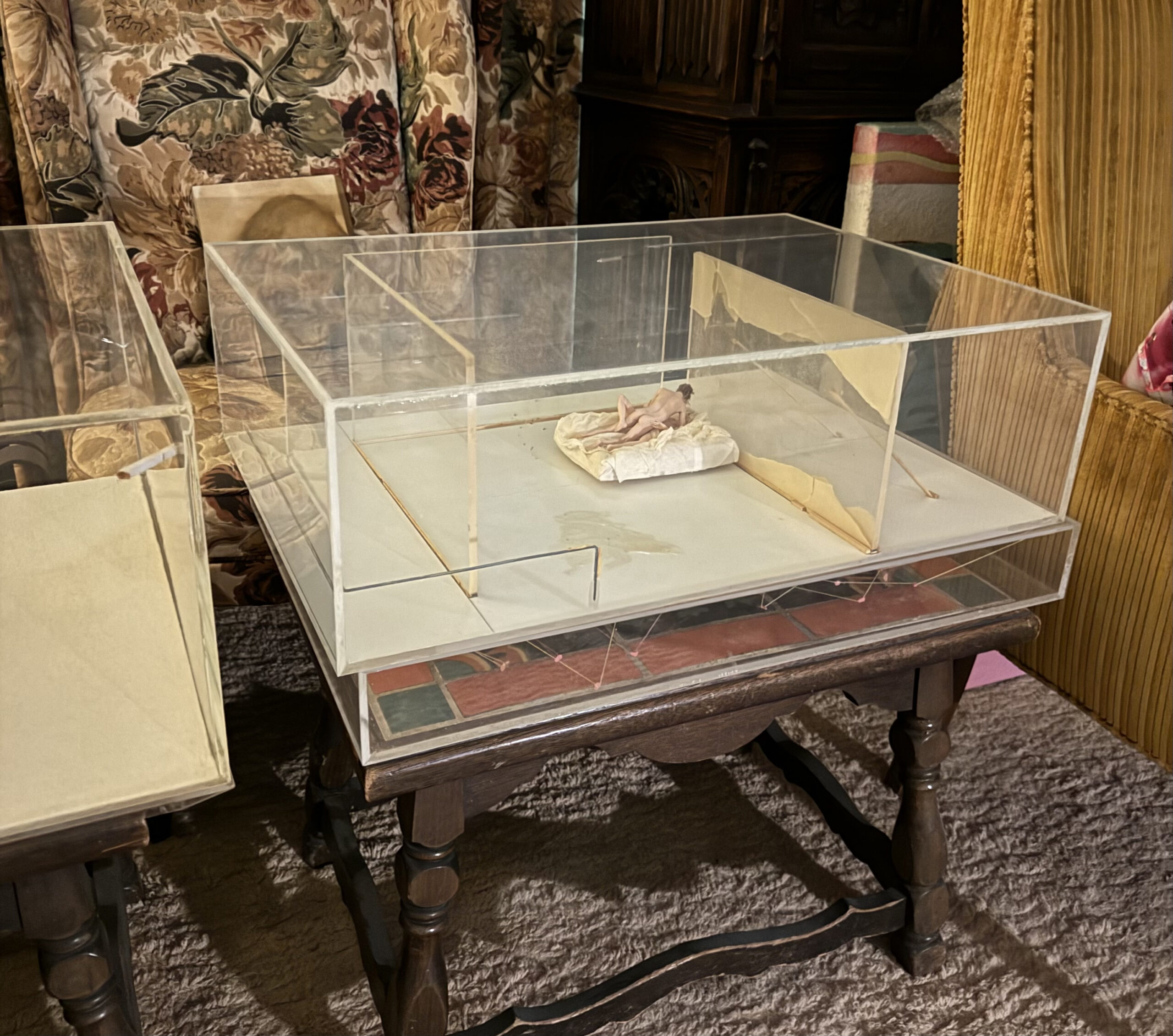
“We were in London for Robert Graham’s opening and he had made these little wax figures. He used matchsticks to carve them. And when they took them to Whitechapel where they were showing it, they had two in the front seat and Jack and Bob in the back seat and they drove them across town. Jack said it was really scary because they wobbled, and they were very fragile.”
________

